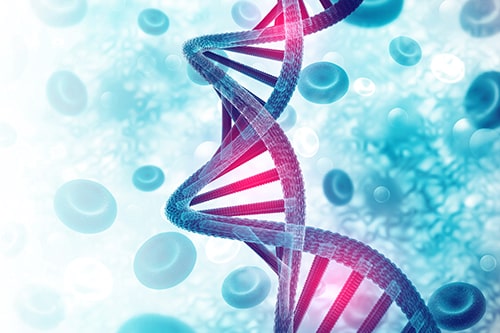Noonan Syndrome

Noonan Syndrome is a genetic disorder which may be caused by variants in one of several Ras/MAPK pathway genes, including PTPN11, SOS1, RAF1 and KRAS. It affects around one in 1,000 to 2,500 individuals. Patients with Noonan Syndrome have an increased risk of developing several cancers that affect the blood (leukemia), nervous system (neuroblastoma), brain (glioma), muscle (rhabdomyosarcoma), and bones.
What are some of the features and symptoms of Noonan Syndrome?
- Widely spaced eyes, low set ears usually rotated backward, short/webbed neck and broad forehead
- Short stature, unusual chest shape, curved spine
- Heart defects
- Renal anomalies
- Failure to thrive/feeding problems
- Neurological issues
- Undescended testes (testicles that haven’t moved into the correct position)
- Eye diseases
- Bleeding disorders
- Hearing loss
- Intellectual disability and language impairment
What is the age at diagnosis of Noonan Syndrome?
Noonan Syndrome can be diagnosed before birth. However, for many individuals, NS is diagnosed at birth or early infancy. In some cases, patients with few to no symptoms may not be diagnosed until later in life.
How is Noonan Syndrome treated?
There is no cure for Noonan Syndrome. Treatment is focused on symptom management, usually by a team of doctors with different specialties.
What types of cancer are individuals with Noonan Syndrome at higher risk of developing?
Cancers that affect the blood (leukemia), nervous system (neuroblastoma), brain (glioma), muscles (rhabdomyosarcoma) and bones.
Other types of Noonan syndromes
There are two other rare syndromes that are often considered under the umbrella of NS.
- Noonan Syndrome with multiple lentigines (small brown patches on the skin) (NS-ML)
- A disorder caused by variants in either PTPN11 or RAF1. Patients with NS-ML have many of the same clinical characteristics as patients with NS, with the addition of hearing loss, multiple color patches on the skin, and widely spaced eyes. Heart defects are more common in NS-ML and delayed growth is milder in NS-ML.
- Noonan Syndrome with loose anagen hair (NS-LAH)
- Caused by variants in a gene called SHOC2 and PPP1CB. These patients may have heart defects and problems with hair growth.